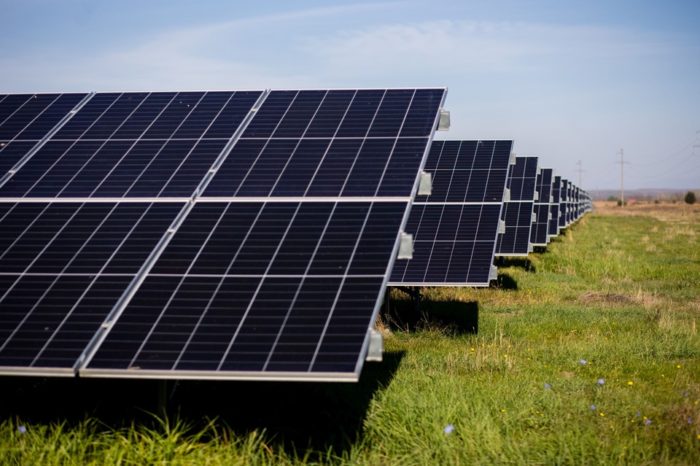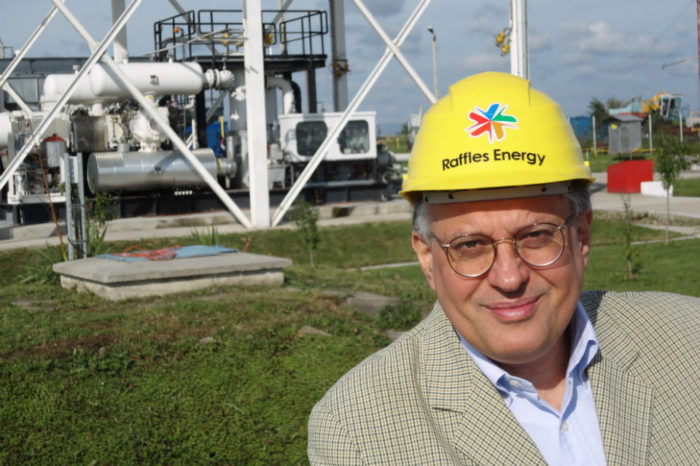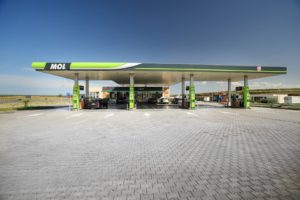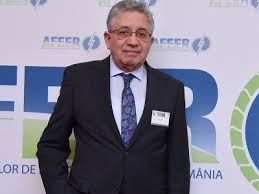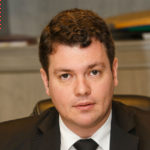Nuclearelectrica: The way you lead people makes all the difference!
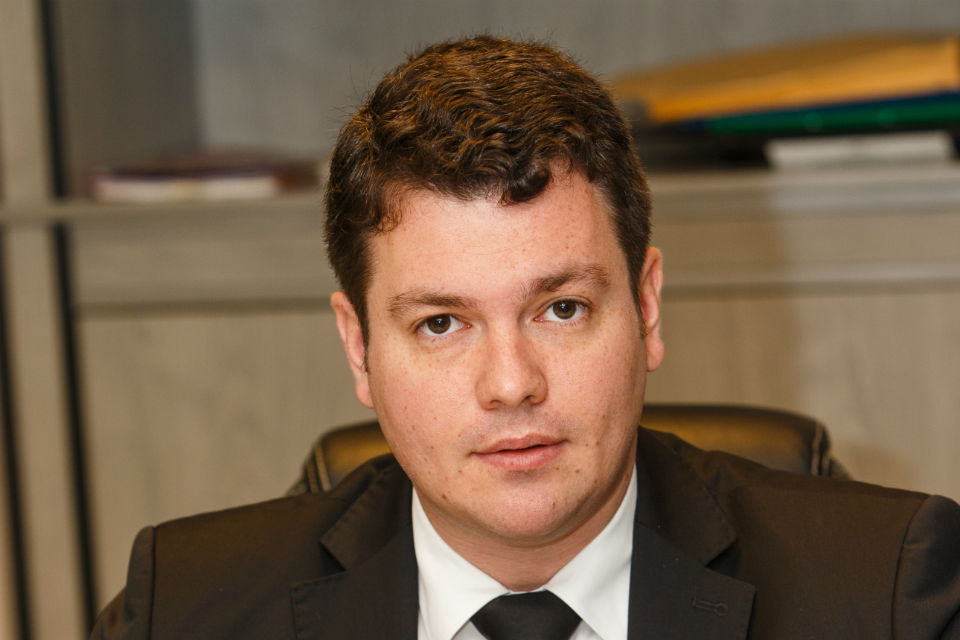
Following international, independent peer-review missions of the nuclear safety level, SNN’s Cernavoda power plant was awarded the “nuclear excellence” qualification, thus positioning the Romanian nuclear operators amongst the most performant nuclear power plants in the world.
“Not only that we were awarded this nuclear safety standard, but we have managed to maintain it following the second assessment,” according to Cosmin Ghita, CEO of Nuclearelectrica.
“This is a very complex inter-pares assessment, one that analyzes all aspects of nuclear safety from chemistry to personnel behavior,” he tells The Diplomat – Bucharest. “The high level of nuclear safety is a result of rigorous maintenance programs, high level of nuclear safety culture of the personnel, a culture that prioritizes nuclear safety above all. In consequence, according to international statistics, Romania ranks first in the world out of over 400 reactors in terms of nuclear capacity factor since in service and it has been in this position for several years thus far. SNN is a benchmarking standard at international level for nuclear safety. Over 2000 experts have joint their efforts, professionalism and drive for performance on a daily basis, for years, to place Romania and its nuclear industry among the best in the world.”
Cernavoda NPP Unit 1 refurbishment –major project for SNN
SNN’s major project is the Refurbishment of Cernavoda NPP Unit 1, which is unfolding according to the schedule. Significant progress has been made within the first Phase of the project, the condition assessment contract being already awarded based on the Procurement law. “The Condition assessment represents the very basis of the entire project as it involves a through diagnosis of the Unit’s systems and components in order to have a clear knowledge of what needs further intervention and to render accurate date for the Feasibility Study scheduled to be completed in 2021,” Ghita explains. “This project will enable an additional 30 years of operation beyond 2026, at less than half the costs of a nuclear build, approximately 1,5 billion Euros, at the same high level of nuclear safety, during a period when obsolete conventional capacities will be taken out of use. The Refurbishment of Unit 1 is entirely managed by SNN.”
Another significant project is the Tritium Removal Facility, worth 194 million Euro, an organic part of the development strategy of the company, the implementation thereof significantly supporting the control of the costs related to the decommissioning and the maximization of the economic efficiency. “The synergies that it creates from the perspective of the implementation of Cernavoda NPP Unit 1 Refurbishment Project represent a strong additional argument in support of the Project,” Ghita adds.
He goes on to say that the objectives envisaged by the implementation of the tritium removal facility Investment Project are quite extensive: Reduction of the decommissioning-related expenses; Reduction of the operational costs by significantly reducing the need for radiation protection materials; Reduction of the waste management costs resulting from the normal operation of the units; Reduction of the duration of planned outages; Reduction of the downtime for refurbishment; Reduction of the waste management costs resulting from refurbishment; Reduction of the refurbishment costs by significantly reducing the need for the necessary radiation protection equipment during the shutdown for refurbishment; Support for refurbishment; Revenues from tritium sale; Revenue from the sale of heavy water after tritium removal.
Both investment projects are directed towards a long-term safe and cost efficient operation of the Cernavoda NPP fleet. Both projects are multi-year projects given their complexity.
Memorandum of Understanding with Canadian company Nordion
Also in 2019, SNN has signed a MoU with the Canadian company Nordion for the potential production of Cobalt 60 in the two reactors on Cernavoda NPP, Nordion being the biggest Cobalt 60 supplier in the world and Cobalt 60 being an important isotope in the health industry.
“We want to be part of this international network by joining other CANDU reactors on the production of Cobalt 60,” Ghita explains. “Furthermore, we are very interested in the development of Generation IV reactors for the very long-term benefit of the Romanian energy system and in order to meet decarbonization targets. We have signed MoUs with both NuScale for the exchange of information and know-how regarding the development of the small modular reactors (SMRs) and with RATEN ICN for the development of the fast lead cooled reactor.
I am also a strong advocate for the development of nuclear energy as an important contributor to the stable, clean energy mix, not only by nuclear new build or refurbishment, but by also extending innovation and research to develop Generation IV nuclear reactors. That is why Romania gladly adhered to the NICE Future initiative under the Clean Energy Ministerial approach in 2018, and I salute this initiative as being a global effort to recognize and benefit from the multiple use of nuclear energy within the framework of the highest nuclear safety standards.”
Ghita argues that the digital era comes with both advantages and challenges: “While advantages are clear, one of the challenges addresses mainly leadership. The World Economic Forum’s most recent report on the future of jobs concludes that, by 2022, no less than 54% of all employees will require significant re- and upskilling. Of these, about 35% are expected to require additional training of up to six months, while 9% will require reskilling lasting 6-12 months and 10% will require additional skills training of more than a year. In the digital era the difference between suscess and failure could be determined by the speed you take action with. Agility is the essential attribute and the digital leadership requires foremost adaptability to work under pressure in a very dynamic environment.”
In his opinion, leadership in the nuclear industry is about building strong participation, understanding and accountability: “All industries must firstly understand very well the digital era, its dynamic courses of action and be able to provide direction and aim. This new approach will most likely develop much more the horizontal leadership as opposed to hierarchical leadership. Hence why participation and accountanbility are the pillars of the digital era leadership. People need empowerment, bridges will need to be build in order to support entire organizational structures. Empowerment comes from re- and upskilling, no time for inertia and regrets as the organizational structures, work proceeses, people skills and approaches will become quite different quite fast from what we know today. The digital era has all the ingredients to put leadership on the highest level ever: in a world of technology, the way you lead people makes all the difference!”
Cosmin Ghita calls for stability and predictability in 2020. “ There is a strong connection between strategic project development and for that matter overall development and stability of the macroeconomic environment in all its complexity,” he says. We need to grow and cultivate government-to-business and business-to-business opportunities both inside Romania and outside. We are all activating in the world of hyper globalism and we need to adjust to the international dynamics.”
Investments in clean energy sources and related financial campaigning
Attaining beyond GDP goals requires industrial symbiosis, meaning allowing member states during the transition period to find synergies and create relevant target resources homogeneity in the way they operate by coherent, supportive policies and regulations, according to Ghita. “Otherwise, states will try to over-compensate policy shortcomings by placing emphasize on old safe ways,” he explains. “Which brings us to the importance of eliminating uncertainty and market failures associated to policies. That is, eliminate contradictory signals to the industries and markets that hamper solid investment plans. From my experience in the nuclear industry, two major variables need fast addressing: investments in clean energy sources and related financial campaigning. If a few years ago financing was the last thing to consider, now it is the first. De-risking industries, nuclear included, has become paramount. That is work from the initial stages of the projects on two major aspects: financial and reputational risks. The potential investor needs to be part of the nuclear industry in order to understand the complexity and realities of such projects. Banks, credit agencies, private investors are only beginning to understand the variables of nuclear new build. Some of the global financial institutions have specific rules and regulations when it comes to putting money into nuclear, others might do it if they could have a complex, comprehensive understanding of the projects since early initiation. Part of the solution is to allow them, early on, to understand the very specific of the industry, risks that are associated, countermeasures to those risks, regulatory solid support mechanisms, state strategy that allows continuity of the project, costs involved, energy market, energy market failures and the role of major investment projects to correct market failures for both the benefit of the current projects and also future perspectives.”
Cosmin Ghita underlines that the nuclear industry is currently witnessing an attempt to shift from: entirely state financed and owned nuclear investment projects towards private financing and set up of support financing mechanisms: “In theory, this may seem as a natural solution seeking mechanism, long witnessed in other industries throughout time. However, practice has proved us that entirely private financing is rather impossible with current new build, that such strategic projects, given their nature and features combined with additional external risk-related elements, still require government support, involvement and guarantees. Regardless of the amount of private capital infused into such projects and implementation of support mechanisms, the state needs to lay down guarantees. In most states, nuclear new build is developed by state-owned companies, so, I do believe that the state should continue to play an active role in nuclear new build by co-working alongside companies in identifying the most suitable financing mechanism.”
He believes that the new industrial policy should foster cooperation between the state and private sector, avoid lock-in situations, that is bring in investment innovation and renounce comfort zone of the conservative approach. “The new policy should highly encourage fair competition, industry level playing field and promote exports,” he continues. “This is one major step away from the old policy which was highly concerned with protectionism of rather non-viable elements of the states’ economies. These are the kind of developments I would like to witness and these are of vital importance for the energy system.”
Need for systemic approaches
The new focus should stem from aligning economic welfare with long term interests of the society, according to Ghita. In his opinion, standalone economic policies have to make room for systemic approaches, systematically implemented. “Measuring the performance has to go beyond GDP towards the so-called “beyond the GDP goals”. This tackles an important overall approach of different welfare indicators to the point where the social and ecological components and citizen wellbeing are completely embedded in the economic approach. I think this is the aim which requires a joint effort,” he concludes.
(From the print edition)


